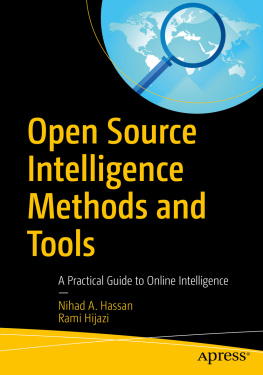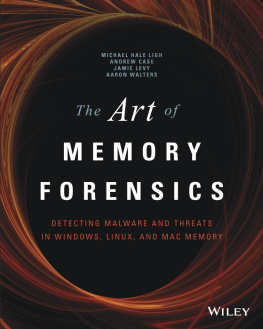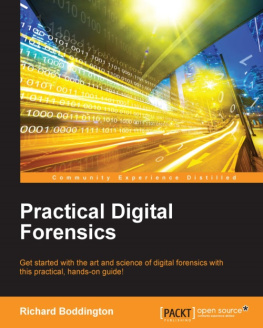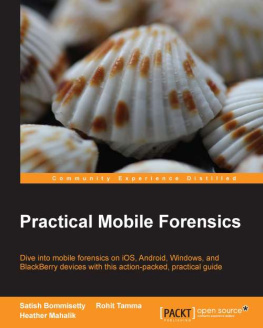Nihad A. Hassan - Digital Forensics Basics : A Practical Guide Using Windows OS
Here you can read online Nihad A. Hassan - Digital Forensics Basics : A Practical Guide Using Windows OS full text of the book (entire story) in english for free. Download pdf and epub, get meaning, cover and reviews about this ebook. year: 2019, publisher: Apress, genre: Romance novel. Description of the work, (preface) as well as reviews are available. Best literature library LitArk.com created for fans of good reading and offers a wide selection of genres:
Romance novel
Science fiction
Adventure
Detective
Science
History
Home and family
Prose
Art
Politics
Computer
Non-fiction
Religion
Business
Children
Humor
Choose a favorite category and find really read worthwhile books. Enjoy immersion in the world of imagination, feel the emotions of the characters or learn something new for yourself, make an fascinating discovery.
- Book:Digital Forensics Basics : A Practical Guide Using Windows OS
- Author:
- Publisher:Apress
- Genre:
- Year:2019
- Rating:3 / 5
- Favourites:Add to favourites
- Your mark:
- 60
- 1
- 2
- 3
- 4
- 5
Digital Forensics Basics : A Practical Guide Using Windows OS: summary, description and annotation
We offer to read an annotation, description, summary or preface (depends on what the author of the book "Digital Forensics Basics : A Practical Guide Using Windows OS" wrote himself). If you haven't found the necessary information about the book — write in the comments, we will try to find it.
Nihad A. Hassan: author's other books
Who wrote Digital Forensics Basics : A Practical Guide Using Windows OS? Find out the surname, the name of the author of the book and a list of all author's works by series.
Digital Forensics Basics : A Practical Guide Using Windows OS — read online for free the complete book (whole text) full work
Below is the text of the book, divided by pages. System saving the place of the last page read, allows you to conveniently read the book "Digital Forensics Basics : A Practical Guide Using Windows OS" online for free, without having to search again every time where you left off. Put a bookmark, and you can go to the page where you finished reading at any time.
Font size:
Interval:
Bookmark:
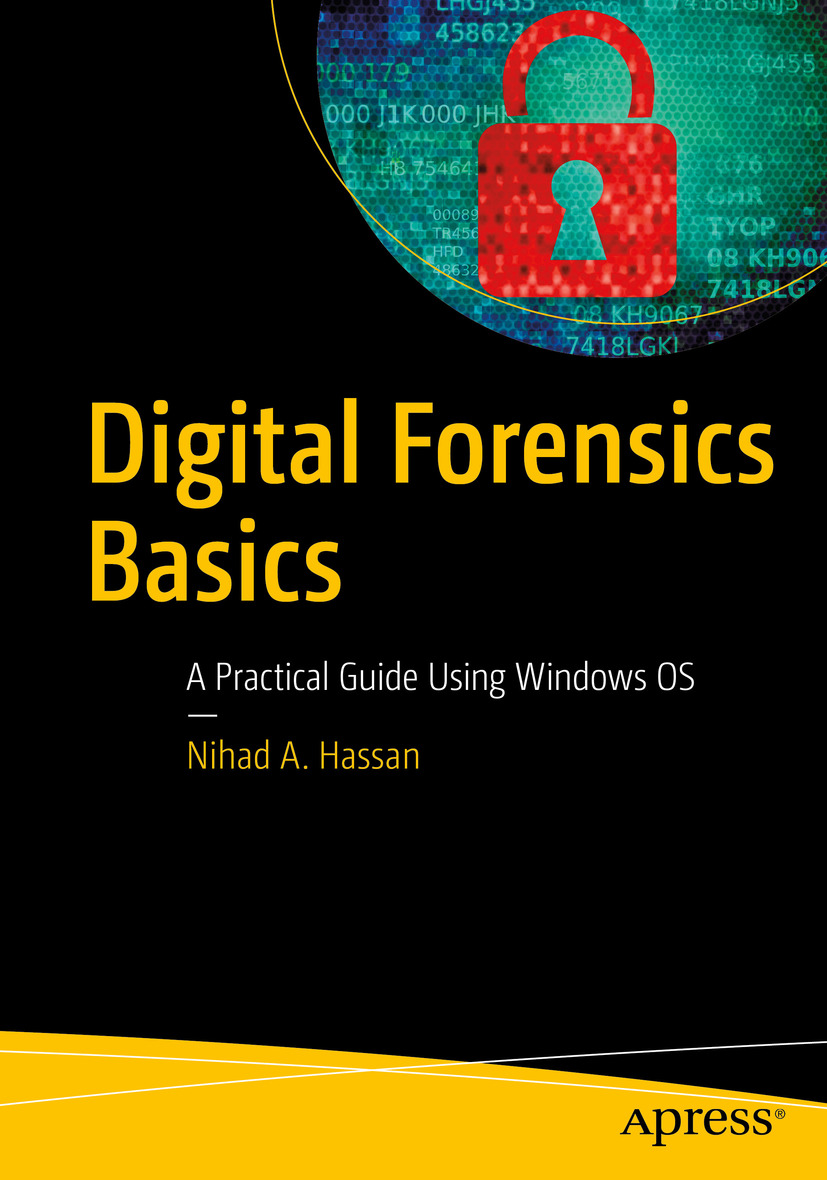

Any source code or other supplementary material referenced by the author in this book is available to readers onGitHub via the books product page, located at www.apress.com/9781484238370 . For more detailed information, please visit http://www.apress.com/source-code .
To my mom, Samiha. Thank you for everything.
Without you, Im nothing.
Nihad A. Hassan
If you are a newcomer to the digital forensic field and you do not know where to start, this is your book! Digital Forensics Basics is your introductory guide to understanding and implementing digital forensics to investigate computer crime using Windows, the most widely used operating system. This book will provide readers with the necessary skills to identify an intruders footprints and to gather the necessary digital evidence in a forensically sound manner to prosecute in a court of law.
Geared toward users with no experience in the field, this book will teach the readers the basic elements, concepts, tools, techniques, and common activities of digital forensics, so they will become well prepared to participate in investigations and understand the process of finding, collecting, and analyzing digital evidence.
Digital Forensics Basics is written as a series of tutorials, with each task demonstrating how to use a specific computer forensics tool or technique. Information presented in this book is suitable for users with varying IT skills, so both professional computer users and beginners will gain the necessary knowledge to uncover and use digital evidence effectively in any kind of investigation. In addition to its up-to-date contents, a dedicated section is reserved for Open Source Intelligence (OSINT) gathering, a topic missed in most digital forensics books.
As the number of people who are entering the digital age continually increases, experienced computer forensics investigators will remain in high demand in the future to investigate cybercrimes. This book is all you need to start your journey in this field with confidence.
Police and other law enforcement personnel
Defense and military personnel
E-business security professionals
Systems administrators
Computer security professionals
Judges and lawyers (with no technical background)
Banking, insurance, and other professionals
IT students
Chapter , Introduction: Understanding Digital Forensics: In this chapter, we introduce the term digital forensics and differentiate between it and other kinds of cybersecurity domains. We briefly cover the concept of digital evidence, its various types, and where we can find it in electronic devices. There is no formal process for applying digital forensics investigations across the globe; however, we introduce the general phases of any digital investigation process and what tasks are required as a part of each phase.
Chapter , Essential Technical Concepts: In this chapter, we cover important technical concepts about computers that must be well understood by any digital forensic examiner. We describe how computers store and represent data digitally, the concept of operating system file structure and its types, and hash algorithms and how we can use them to verify the authenticity of any piece of digital data. We also discuss types of computer storage and the file system types supported by Windows OS.
Chapter , Computer Forensics Lab Requirements: In this chapter, we cover the essential tools needed to assemble a digital forensic lab. We talk about the characteristics of the physical facility that are going to house the lab, needed electrical equipment, and lab furniture and hardware devices related to digital investigation work; we also cover the minimum technical requirements for the forensic workstation(s) we are going to use for analyzing digital evidence. We discuss the design and security requirements of the lab network, then we move to talk about forensic software and the importance of validating computer forensic tools by a credible body before using it officially in the investigation.
Chapter , Initial Response and First Responder Tasks: In this chapter, we talk about the mission and services provided by the first responder for any investigation that involves digital evidence. We cover the first responders toolkit, the first responders tasks upon arriving at the crime scene, and the practical aspects of identification, seizure, and transport of gathered evidence stored on electronic media to the forensic lab for detailed examination.
Chapter , Acquiring Digital Evidence: In this chapter, we cover the main task conducted during any digital forensics investigation, which is capturing computer memory images. We discuss how to capture volatile memory (live acquisition), such as RAM memory and other volatile data like network information, and nonvolatile memory (static acquisition), such as HDD, tape, SSD, flash thumb, and any similar digital storage medium. We also list possible challenges that a digital forensic examiner may face during the acquisition process.
Font size:
Interval:
Bookmark:
Similar books «Digital Forensics Basics : A Practical Guide Using Windows OS»
Look at similar books to Digital Forensics Basics : A Practical Guide Using Windows OS. We have selected literature similar in name and meaning in the hope of providing readers with more options to find new, interesting, not yet read works.
Discussion, reviews of the book Digital Forensics Basics : A Practical Guide Using Windows OS and just readers' own opinions. Leave your comments, write what you think about the work, its meaning or the main characters. Specify what exactly you liked and what you didn't like, and why you think so.


